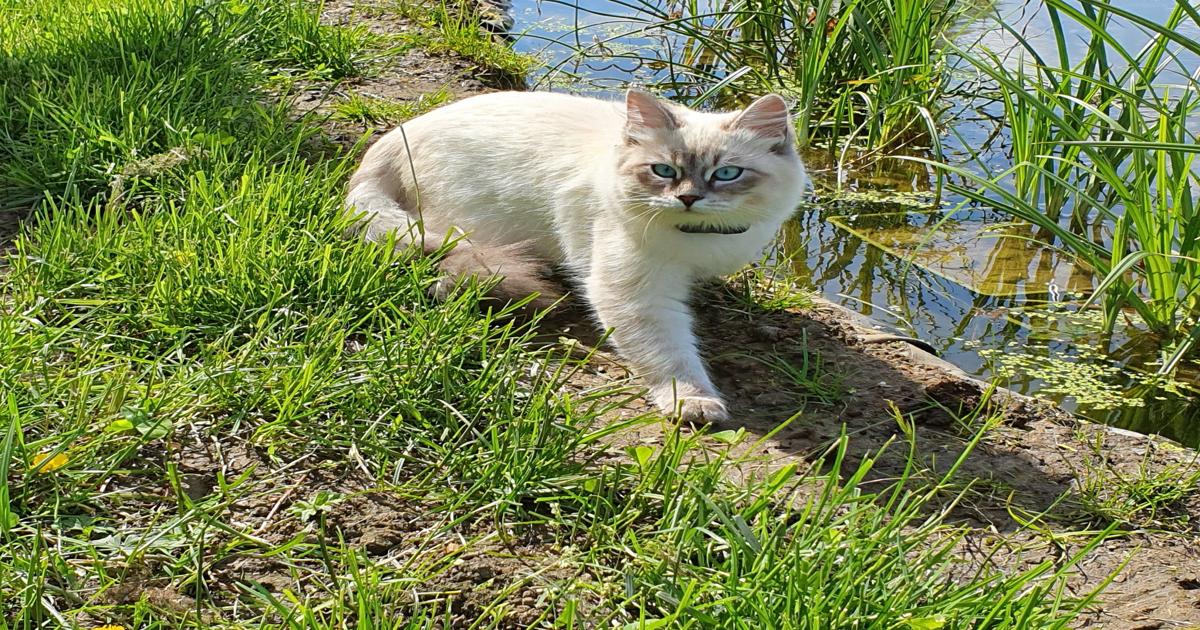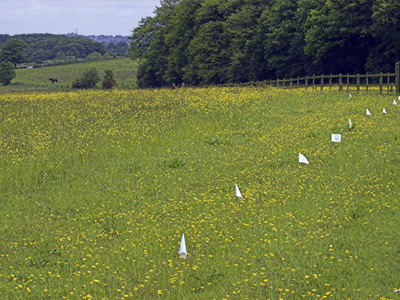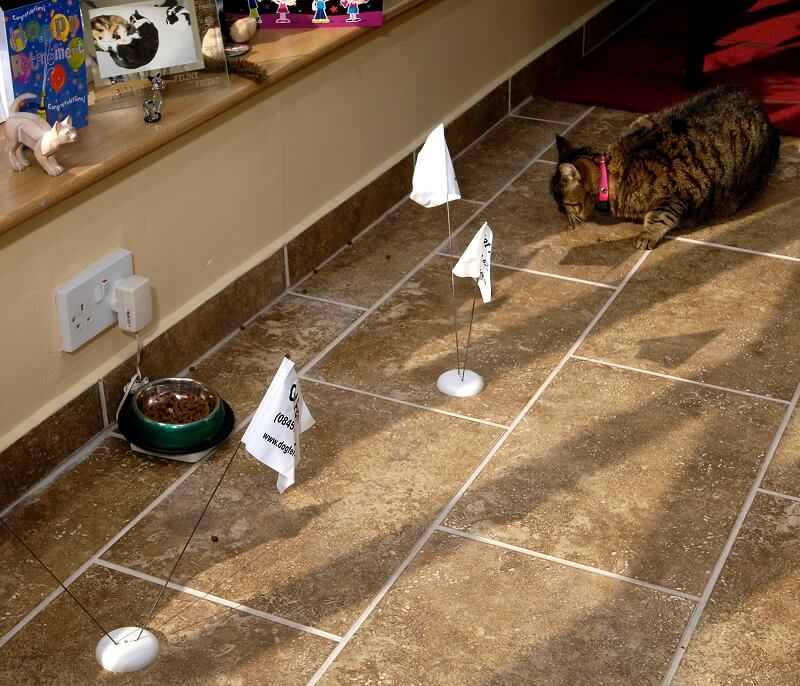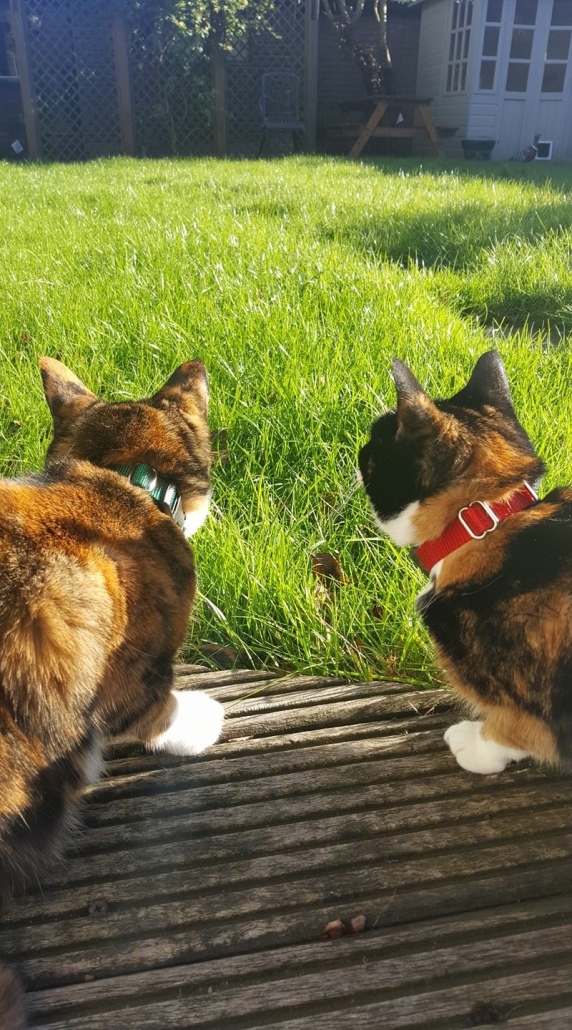Dog Fence Safety Tips: What Every Pet Owner Should Know
Dog Fence Safety Tips: What Every Pet Owner Should Know
Keeping Pets Safe with Invisible & Electronic Dog Fences
When choosing a dog fence, safety should always be the number one priority. Whether you have an escape-artist dog, a curious cat, or a property near busy roads, a properly installed hidden dog fence can provide peace of mind. But not all fences are created equal — and there are a few key things every pet owner should know.
1. Choose a System Designed with Safety First
Not all electronic fences are the same. Cheap DIY kits often use thin cable and underpowered transmitters that break down quickly, while GPS collars rely on weak satellite signals that can drift or fail altogether. These cut corners leave pets vulnerable.
At DogFence, our systems are:
- ✅ DEFRA tested and proven safe for dogs and cats.
- ✅ Waterproof, chew-proof, and durable — designed for real pet life.
- ✅ Programmable to your pet’s size & temperament, not “one-size-fits-all.”
- ✅ Equipped with safety features like automatic shut-down after 15 seconds and anti-linger to prevent battery drain.
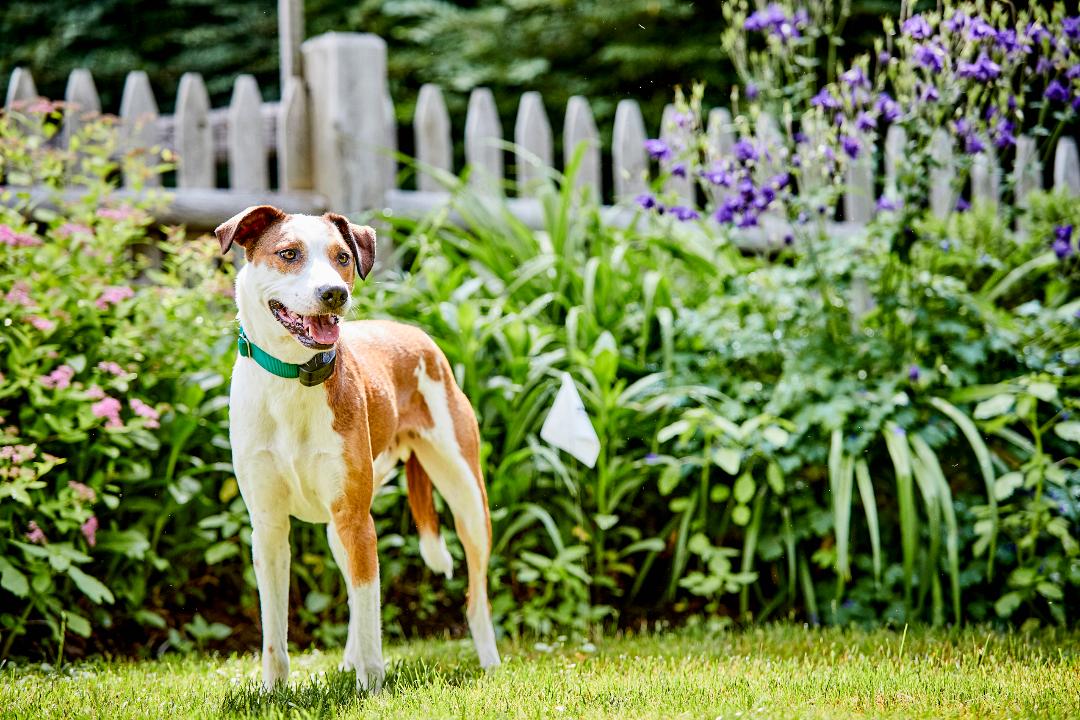
Enjoying freedom with peace of mind — this happy pup shows how DogFence provides reliable dog fence safety tips in action. Alternative with syn
2. Professional Installation Matters
A hidden fence is only as safe as the way it’s installed. At DogFence Ltd:
- Our installers carefully bury the boundary cable using specialist equipment.
- We avoid hazards like underground pipes and electric gates.
- You’ll get a tailored boundary design that protects both your pets and your garden.
This reduces the risk of gaps, interference, or weak spots that could put pets at risk.
3. Training is Key to Safety
Even the best system won’t work without consistent training. That’s why DogFence provides full training on installation day:
-
Dogs (and cats) learn to respond to the warning beep and flags before feeling the impulse (correction).
-
Our training uses gentle, positive reinforcement so pets understand boundaries quickly.
- The dog always has something to see (flags), something to hear (beep) and finally something to feel (correction).
Every dog is different — some pick up the concept like a duck to water, while others are naturally cautious and take a little more time. Just like people, pets all learn at different paces. The most important thing is to follow the full training programme step by step, without skipping ahead, so your pet builds confidence at the right speed.
Above all, training should always be upbeat and positive. By keeping the sessions short, consistent, and encouraging, your dog will associate the fence with freedom rather than restriction. Most pets are safely contained within just a few sessions — and owners are amazed at how quickly their dogs adapt when training is done correctly.
See our installation & training process ›
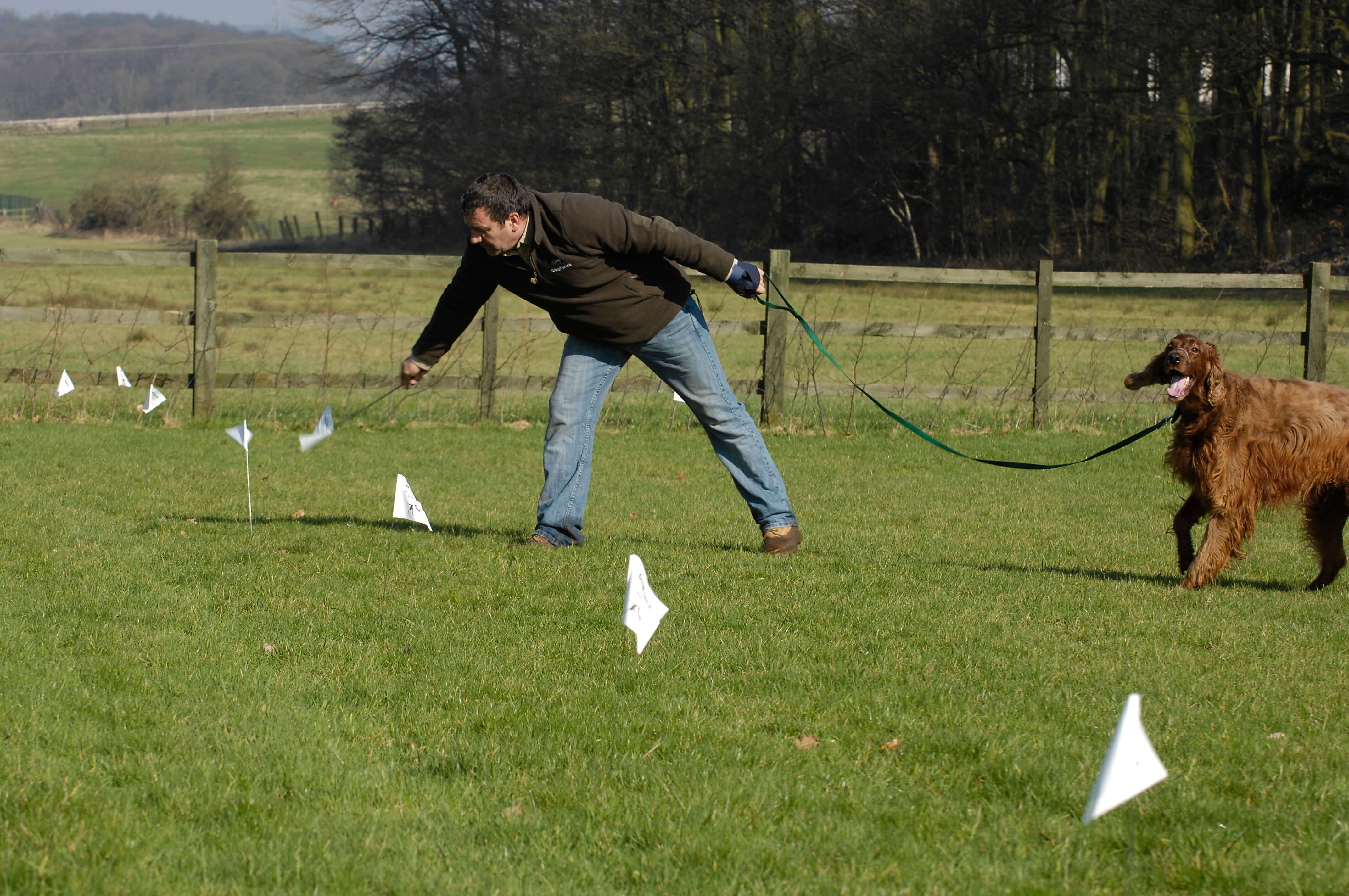
Expert training with DogFence — clear boundaries, safe pets, and peace of mind.
4. Regular Collar Checks
Your pet’s safety depends on keeping their computer collar fitted and functioning correctly. A hidden fence is only as reliable as the collar your pet wears, so it’s vital to make these checks part of your routine:
-
Check the battery regularly – When the battery runs out, the fence can’t do its job, and your pet can run out. At DogFence, our collars have the longest battery life in the industry, but even so, we recommend testing the collar monthly (using the test lamp supplied) and replacing batteries at the correct intervals to avoid any lapse in protection. Why not join our battery programme? Contact us here to learn more.
-
Ensure the collar fits correctly – If the collar is too loose, it becomes nothing more than an ineffective necklace, as the contacts won’t touch the skin. Too tight, and it can cause pressure sores. The simple rule: lift your dog’s head up to the sky; when the neck is stretched, you should be able to slip just one finger between the collar strap and the skin.
-
⚡ Surge and lightning protection – Our professionally installed systems come with lifetime warranty and built-in lightning protection. If lightning ever strikes the boundary wire, our surge protection unit safely diverts the current into the ground, preventing it from entering your home’s electrics.
By keeping up with these simple checks, you’ll ensure your fence remains a safe and reliable barrier that protects your pet every day.
Watch our quick video guide on how to check your dog’s collar fit — making sure it’s snug, safe, and comfortable every day.
5. Creating “No-Go Zones” with Inner Loops
One of the unique advantages of an invisible dog fence is that you can protect more than just the perimeter. By running an inner loop off the main boundary wire, we can create “no-go zones” inside your garden.
This works because the boundary cable carries a harmless FM radio signal. When we twist the cable together — a bit like bringing two magnets together — the signal cancels itself out. That means we can route the wire across the lawn to form a small protected zone without the dog receiving an activation along the way.
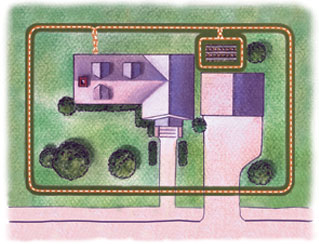
Typical DogFence boundary layout — with inner loops to protect ponds, flowerbeds, or toxic plants inside the garden.
What Can You Protect?
-
Ponds and swimming pools – preventing accidents and keeping pets safe around water.
-
Flowerbeds or vegetable patches – protecting your plants (and stopping your dog digging them up!).
-
Toxic plants – such as acorns, yew, or foxglove, which can be highly poisonous to dogs.
These inner loops give you the flexibility to keep your dog away from danger while still giving them the freedom to roam safely in the rest of the garden.
Discover invisible no-go zones ›
Real Customer Story: “It’s Given Us Peace of Mind”
“We were nervous about using a hidden fence at first, but safety was our top concern. Our Labrador, Daisy, had escaped twice and nearly caused an accident on the main road. Since having DogFence installed, we haven’t had a single incident. The training was simple, the collar is comfortable, and Daisy is now free to enjoy the garden safely. It’s given us real peace of mind — worth every penny.”
First hand stories like these show how the right system, properly installed and trained, makes all the difference in keeping pets secure without compromise. See more success stories from our customers testimonials .
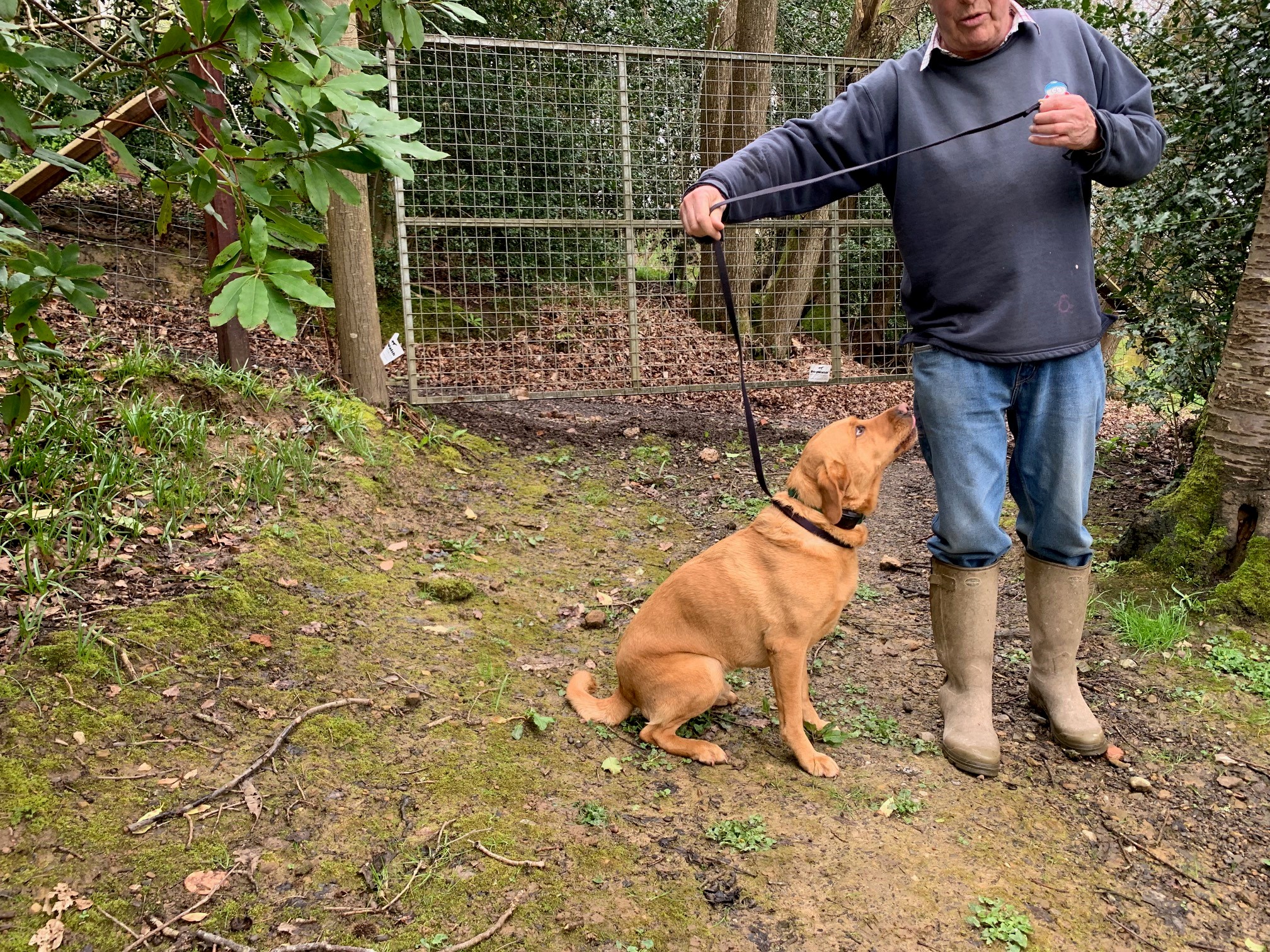
Final Thoughts: Safety = Peace of Mind
A dog fence should never be a compromise on your pet’s welfare. By choosing a Pro Range Dog with professional installation, and proper training, you’ll have the confidence that your pet is secure, safe, and free to enjoy the garden.
Ready to Keep Your Pet Safe?
Call us on
01628 476475
|
Message us on WhatsApp
|
Request a Free Quote Online

